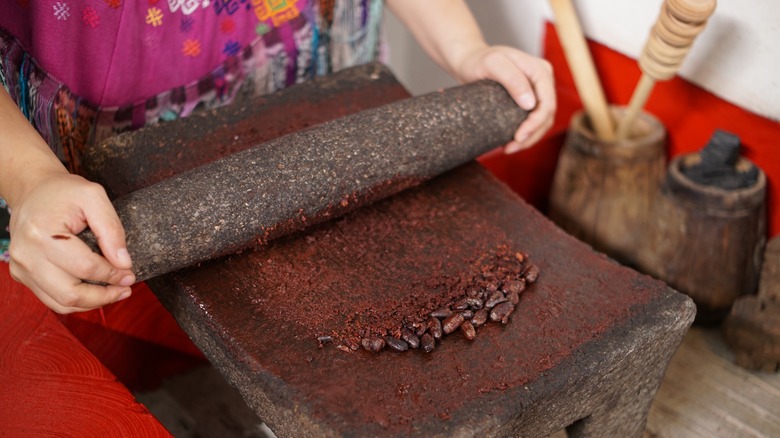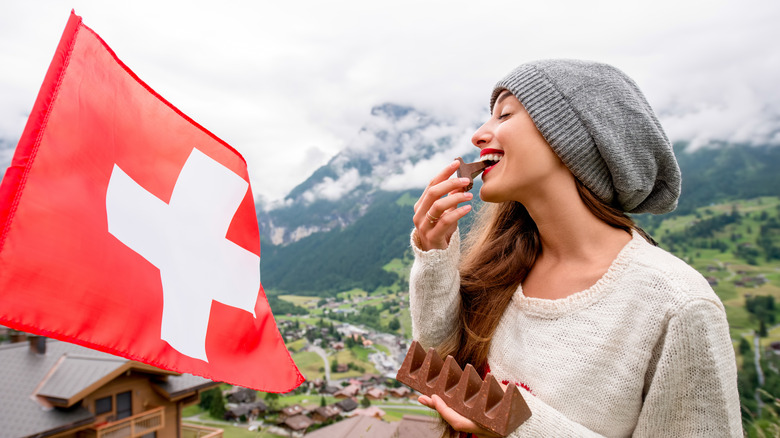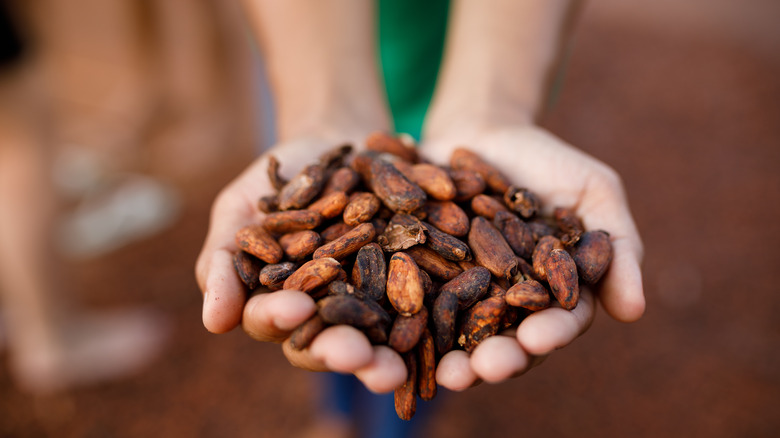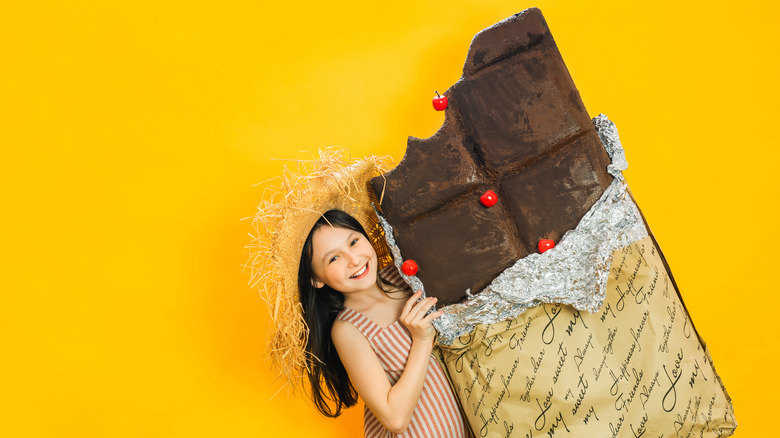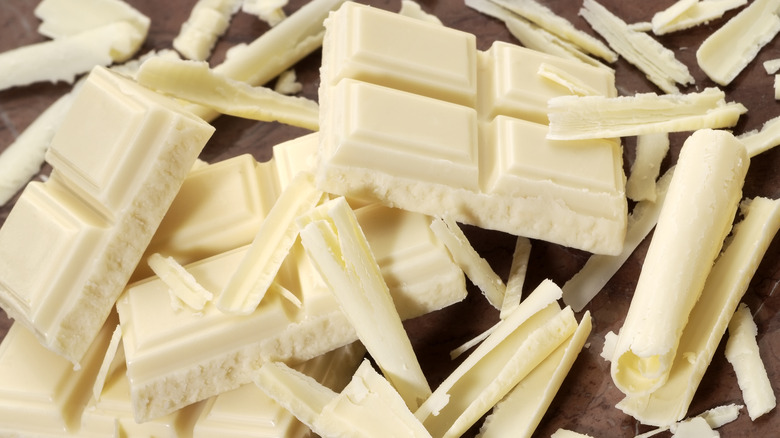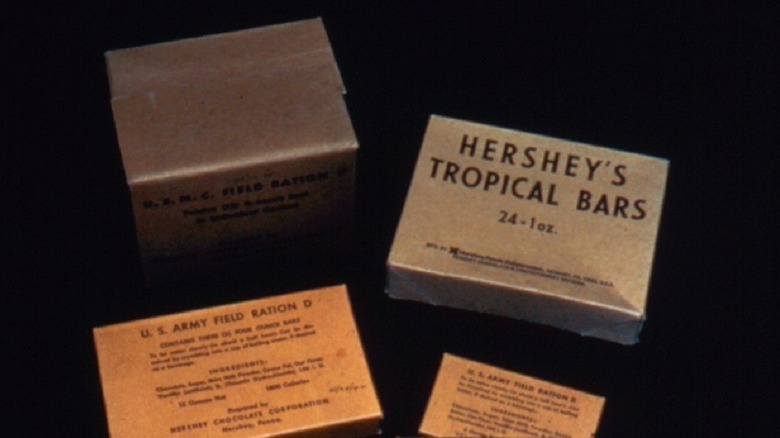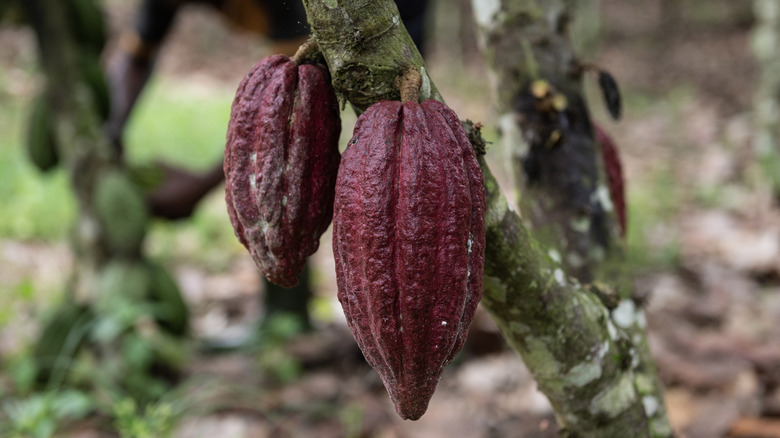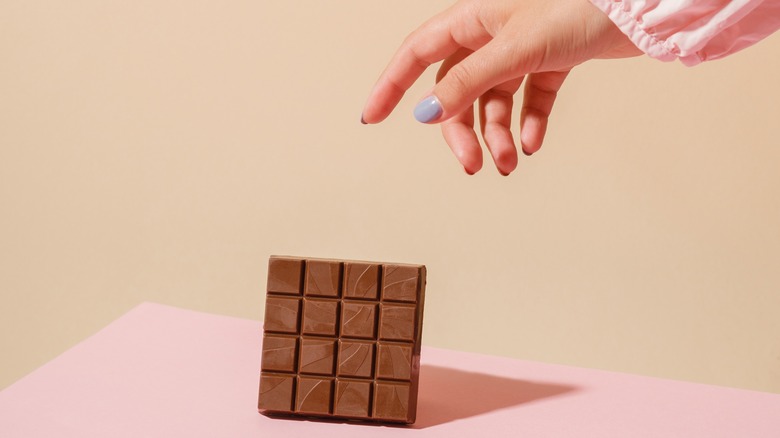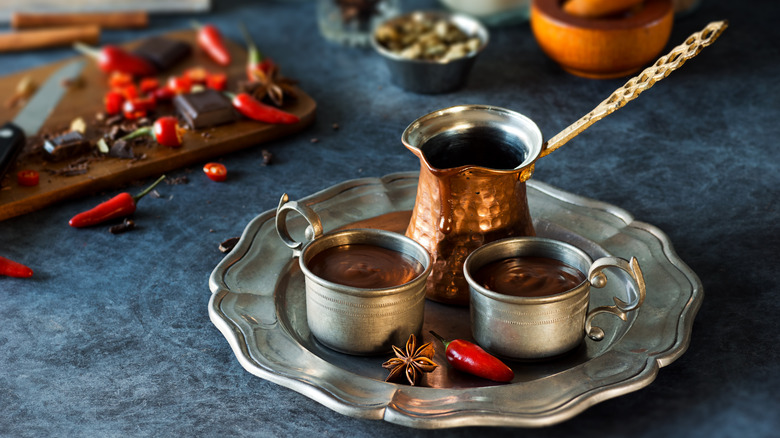12 Chocolate Facts You'll Wish You Knew Sooner
Calling all chocolate lovers! As indulgent as it is delicious, it's no wonder that chocolate has been a wildly popular treat for centuries, captivating the taste buds of people in all corners of the globe. While most of us savor the smooth, velvety goodness of chocolate whenever we need a little bit of a pick-me-up, there is an entire world of fascinating facts hidden beneath its surface. How much do you really know about your favorite sweet snack? Do you know how it's made or where it came from?
From its ancient origins, labor-intensive production process, and surprising health benefits to its historical significance as an Aztec currency and beverage for European nobles, the story of chocolate is a rich tapestry of culture, trade, and innovation. Hungry for more? Get ready to take your chocolate knowledge to the next level as we delve into 12 intriguing facts about this beloved dessert.
1. Chocolate has some very ancient origins
It probably won't surprise you to hear that humans have been enjoying chocolate in one form or another for thousands of years. Its origins can be traced back to ancient Mesoamerica. The Olmecs, Mayans, and Aztecs were the original cultivators of the cacao plant and in fact, the word for chocolate comes from a Spanish interpretation of the Aztec word "xocolātl," as well as the Mayan word "chocolhaa." In English, this word means "bitter water."
It's thought that the Olmecs were the first people to cultivate cacao and process it into an early form of chocolate. While there's no written record indicating such, pottery shards dating back as early as 1400 B.C. have been found to contain traces of chocolate. From there, the Mayans likely took up the practice — we can still see Mayan vase paintings depicting chocolate being used in ceremonies. Later, the Aztecs took cacao beans and chocolate as tribute from conquered tribes.
To the Mayans, the cacao tree had divine powers and served as a bridge between the earthly and divine realms. Since chocolate had a religious significance, it was used during rites and religious ceremonies, as well as on special occasions and celebrations. The Mayan myth states that the serpent god Quetzalcoatl was the original planter of cacao trees. This special significance can still be felt in the name of the plant. The scientific name for the cacao tree is Theobroma cacao, which translates to "food of the gods."
2. Switzerland is home to the world's biggest chocoholics
Despite Switzerland historically having no major cacao-producing colonies in the New World or any major seaports to import it through, it has developed a major reputation over the years as both one of the largest producers and consumers of chocolate. And the Swiss know quality chocolate when they see it. In Switzerland, the average person consumes around 22 pounds of chocolate a year — more than any other country in the world! About 59% of that chocolate consumption is made up of Swiss-produced chocolate, while the remaining 41% accounted for imported chocolate.
And that's not all. The country boasts some of the finest chocolatiers in the world and has a long-storied tradition of innovation in the chocolate industry. For example, in 1879, the famous Swiss chocolatier Rudolf Lindt's conching machine revolutionized chocolate production and made it smoother and creamier. Today, the company that bears his name is one of the largest chocolate manufacturers in the world. Other well-known chocolate brands with Swiss origins include Toblerone and Nestle.
3. Cacao beans were once used as currency
During the Classical Maya period, spanning from 200 to 900 C.E., cacao beans emerged as a medium of exchange within the communities. The Maya, unlike civilizations that minted coins, relied on bartering as the foundation of their economic transactions. Because cacao beans were so highly valued not only as a commodity but as a spiritual item, they quickly became a highly sought-after and easily portable form of currency that could be traded, used to pay taxes, or given as tribute. The act of presenting cacao beans to rulers was a display of loyalty and an acknowledgment of the leader's divine authority.
The Aztecs also embraced the use of cacao beans as currency, though they did use copper ingots to trade as well. Ancient Mesoamerican societies valued the cacao bean as somewhat of a luxury item, and the hot chocolate drink made from it was usually reserved for the nobility and the higher-ups in society, giving it an exclusive appeal that only furthered its value. One cacao bean was worth the same as a tamale, but 100 beans could purchase a turkey hen.
With the arrival of Spanish colonists in Central America during the early 16th century, cacao beans found a new audience. We see accounts of Spanish colonists using them to pay their laborers. In the 1570s, naval explorer Diego García de Palacio wrote that one Spanish real was equal to about 200 cacao beans and that 1,600 beans were equal to about one peso.
4. The world's largest chocolate bars weigh more than 2 tons
Every day, chocolatiers work to improve the quality of their creations, but they also attempt some pretty impressive confectionary feats while doing it. In 2011, Thornton's PLC, a renowned chocolate manufacturer based in the United Kingdom, took the chocolate game to new heights by producing a truly monumental chocolate bar. Weighing an astonishing 12,770 pounds, this colossal dessert captured the attention of chocolate enthusiasts worldwide and won the Guinness World Record for Largest Chocolate Bar. Such an achievement not only showcased the ingenuity of UK chocolatiers but also demonstrated the world's ongoing fascination with gigantic confections.
Of course, there are always more records to break. Leading up to Super Bowl LIV, chocolate industry giants Mars and Hershey engaged in a spirited battle over who could create the world's largest nut bar. First, Mars created a giant Snickers bar containing an astonishing 3,500 pounds of chocolate, along with over 1,200 pounds of nougat, peanuts, and caramel. But Mars' record was short-lived, and Hershey beat them out with its giant Reese's Take 5 bar, weighing in at 5,943 pounds and measuring 9 by 5.5 by 2 feet.
5. Chocolate has a very long shelf life
Chances are, there's no need to fret about your Halloween or Valentine's Day stash going bad. Since chocolate doesn't contain much moisture, it doesn't grow mold as easily as other foods do. With proper storage, you can indulge in your favorite chocolate treat long after you initially bought it. Keep your chocolate fresh for as long as possible by sealing it in an airtight container, which will help shield it from heat and moisture that could affect the texture or taste.
Just as important as storage is the kind of chocolate you intend to store. The general rule is that the darker the chocolate, the longer it lasts. Milk and white chocolate will last you about six months unopened, but dark chocolate with a higher cacao content can last up to two years. You might also consider whether the chocolate contains other ingredients that might add moisture, like peanut butter, cherries, caramel, or nuts, since they won't last as long as plain chocolate.
But even the darkest chocolate won't last forever without undergoing a few changes. If you've ever found an old piece of candy in the back of your cupboard, then you know that years-old chocolate can develop a chalky gray or white substance on its exterior. This isn't mold, and it won't make you sick, but it likely won't taste very good, either. Check for cracks or discoloration to ensure your chocolate is still good to eat.
6. Chocolate used to be prescribed as medicine
We mainly think of chocolate as a tasty dessert today, but that hasn't always been the case. In fact, it has a centuries-long history of being used as a medicinal remedy for all kinds of ailments. Chocolate has been used as a medicine as long as it has existed and its roots go back several thousand years ago to Central and South America. Written works like the Badianus Manuscript, an Aztec herbal guide, recommended cacao-based medicine to treat an array of ailments.
In the ancient civilizations of the Mayans and Aztecs, cacao beans were highly esteemed for their healing properties. When the Spanish conquistador Hernán Cortés arrived in the Aztec capital of Tenochtitlan in 1519, he sampled the thick and dark chocolate drink that it is said Aztec emperor Montezuma II drank 50 times a day for its stimulating effect.
Cortés brought this drink back with him to Spain, where its use spread throughout Europe over the centuries. Cacao-based medicine was prescribed for fatigue, dysentery, gout, stomach disorders, and even melancholy. It was believed that the consumption of chocolate could restore energy, improve digestion, and alleviate feelings of "hypochondriac melancholy."
7. White chocolate isn't actually chocolate
If you've ever taken a bite of white chocolate and thought that something was a bit off, you're not quite wrong. There's a reason it doesn't taste quite the same as dark or milk chocolate: It's not actually chocolate. Chocolate contains cocoa solids, which it gets from the cacao beans it's made from. Those solids give chocolate its unmistakable taste, texture, and color. But since white chocolate doesn't contain any cocoa solids, it doesn't meet the criteria set by the U.S. Food and Drug Administration (FDA) to be officially classified as chocolate.
So if white chocolate isn't made of cacao solids, then what is it made of? Mainly, cocoa butter, milk solids, and sugar. However, to qualify as true white chocolate and not merely a white coating, it must contain at least 20% cocoa butter. Also, it's worth noting that the percentage of cocoa butter in white chocolate can vary, and some artisanal or craft white chocolate bars may contain more than others; but it cannot contain more than 55% sugar.
If you're a white chocolate fan, you're not alone — while it may not technically be chocolate in the most traditional sense, it is still very much an integral part of confections, candy, and chocolate treats. In fact, it makes up about 10% of the chocolate market, and its popularity is steadily growing.
8. Chocolate has a history of fueling soldiers and space travelers
Chocolate has played a role in the military since the early days of the American Revolution when General George Washington recognized the value of it as a source of sustenance for his troops. The combination of sugar and caffeine provided an excellent energy boost, helping soldiers stay alert and boosting morale. Washington included chocolate in his troops' rations and occasionally used it as a form of payment during scarce times when he couldn't afford to pay them.
Fast forward to World War II, when the U.S. government took this approach to the next level. Partnering with Hershey, the United States military created a unique chocolate bar known simply as "Ration D." This specially-designed chocolate bar had 600 calories and was meant to be a survival ration when food was scarce. Compact, heat-resistant, and easy to carry, the Ration D became a cherished companion for troops on the battlefield.
But humanity's undying love of chocolate isn't limited to the military. In 1961, when Soviet cosmonaut Yuri Gagarin became the first person to orbit the Earth, he had a tube of chocolate sauce with him for his travels. Since then, it's been incredibly common for astronauts to bring chocolate on board their flights — for instance, M&M's have been present on space missions since the Columbia shuttle launched in 1981!
9. Chocolate has some surprising health benefits
While you may think of dark chocolate as a bit of a guilty pleasure, there are more reasons to enjoy it. Dark chocolate has a higher cocoa content and contains less sugar than milk or white chocolate. It also has a few surprising benefits that make it more than okay to indulge in.
One of the most remarkable health benefits of dark chocolate lies in its ability to protect the heart. A 2017 study by the Journal of the American Heart Association revealed that the flavonoids and antioxidants in dark chocolate can improve blood flow, reduce inflammation, and enhance heart health overall. Consuming moderate amounts of dark chocolate has been linked to lower blood pressure and a reduced risk of heart disease, making it a sweet addition to any heart-healthy diet.
We all know chocolate is great for a pick-me-up, but did you know that it's scientifically proven to put you in a better mood? In a 2022 paper in The Journal of Nutritional Biochemistry, it notes that eating 85% dark chocolate helps to promote the diversity of your intestinal bacteria, which creates a prebiotic effect in your gut's microbiome that positively affects the gut-brain axis. According to a 2013 study from the British Journal of Clinical Pharmacology, not only does dark chocolate contain caffeine and theobromine, which could help with focus and alertness, but also improve brain functions like memory and learning capacity!
10. Making chocolate is an incredibly time-consuming process
If you've ever wondered how chocolate is actually made, you might be surprised to learn just how long it takes to process cacao beans into a delicious piece of chocolate. From bean to bar, chocolate-making is a process that can take several weeks.
It all begins with the cacao tree. Once planted, a cacao farmer must wait about 4 to 5 years before the tree starts bearing fruit and the precious cacao beans can be harvested from its pods. Then, for about 6 to 10 days, the beans are left to ferment. After about a week has passed, the beans are spread out to sun dry for another 5 to 10 days, depending on weather conditions. This step is important to ensure that the beans have as little moisture in them as possible before roasting for up to an hour.
Once the beans are nice and roasted, the outer shell can be removed to reveal the cacao nib, which is what gets ground up into a substance called chocolate liquor (a combination of cocoa butter and cocoa solids). The chocolate liquor can then be mixed with sugar, milk, or other ingredients, depending on the kind of chocolate being made. This mixing process is called conching, and it can take hours or even days.
Finally, the chocolate is tempered, which is a technique to cool the chocolate and stabilize the cocoa butter crystals. This process gives the chocolate a glossy appearance and a satisfying snap.
11. Chocolate bars are a relatively new invention
Did you know that, according to Statista, the average American eats about 8.94 kilograms of chocolate a year? That's just about 20 pounds per capita! But while humans have been refining and enjoying cacao products for thousands of years, the chocolate bar wasn't invented until the 19th century. Before then, chocolate was mainly consumed as a frothy and spicy hot beverage.
It wasn't until the early 1800s that Dutch chemist Coenraad Van Houten invented the cocoa press, which could process cacao beans into cocoa powder. This process became known as "Dutching," and it made cocoa smoother and more soluble. That meant that cacao could be mixed with other ingredients and liquids easily. It's this cocoa powder that became the base for chocolate bars.
In 1847, chocolatier Joseph Fry introduced another significant contribution. He developed a special technique to mix melted cocoa butter with cocoa powder and sugar to create a paste that he could mold into a solid bar. A few decades later, Swiss chocolatier Daniel Peter would take the chocolate bar one step further when he figured out how to add milk to chocolate, creating the first milk chocolate bars. Later, Peter would partner with Henri Nestlé to perfect the formula for milk chocolate by using Nestle's revolutionary powdered milk, giving rise to the beloved milk chocolate bars we know and love today.
12. Chocolate hasn't always been a sweet treat
We love chocolate because of its delicious and decadently sweet flavor, but the ancient brew of the Aztecs and Mayans — which was greasy, gritty, and bitter — is a far cry from the silky smooth hot chocolate we're used to now. Mesoamerican people enhanced their chocolate with a variety of spices to cut through the bitter flavor, but since they didn't have access to refined sugar, there wasn't much they could do to sweeten it. The chocolate was enjoyed with honey, vanilla, cinnamon, anise, chili peppers, or rosewater and generally took on a deep red or orange color because of these spicy additions. It could also be mixed with masa, a dough made of ground corn.
Even after the Spanish conquistadors brought chocolate back to Spain to be enjoyed by the aristocracy, they continued to prepare it with similar spices for decades. Chocolate remained exclusive and relatively unknown until the Spanish colonies in the Caribbean gained a stronger foothold and cane sugar became cheaper and easier to import. Chocolate was still consumed as a hot beverage, but by the 18th century, it was nearly always sweetened.

